Cursor-guided dictation and better voice control
May 6, 2025•4 min read
Dictation at your cursor
The previously sharp distinction between transcription and dictation is gone. Clinicians can now dictate everywhere in notes, documents, and Context.
If you prefer to make edits or additions by voice rather than typing, simply click the microphone icon near the copy button and move the cursor to where you want to begin dictating.
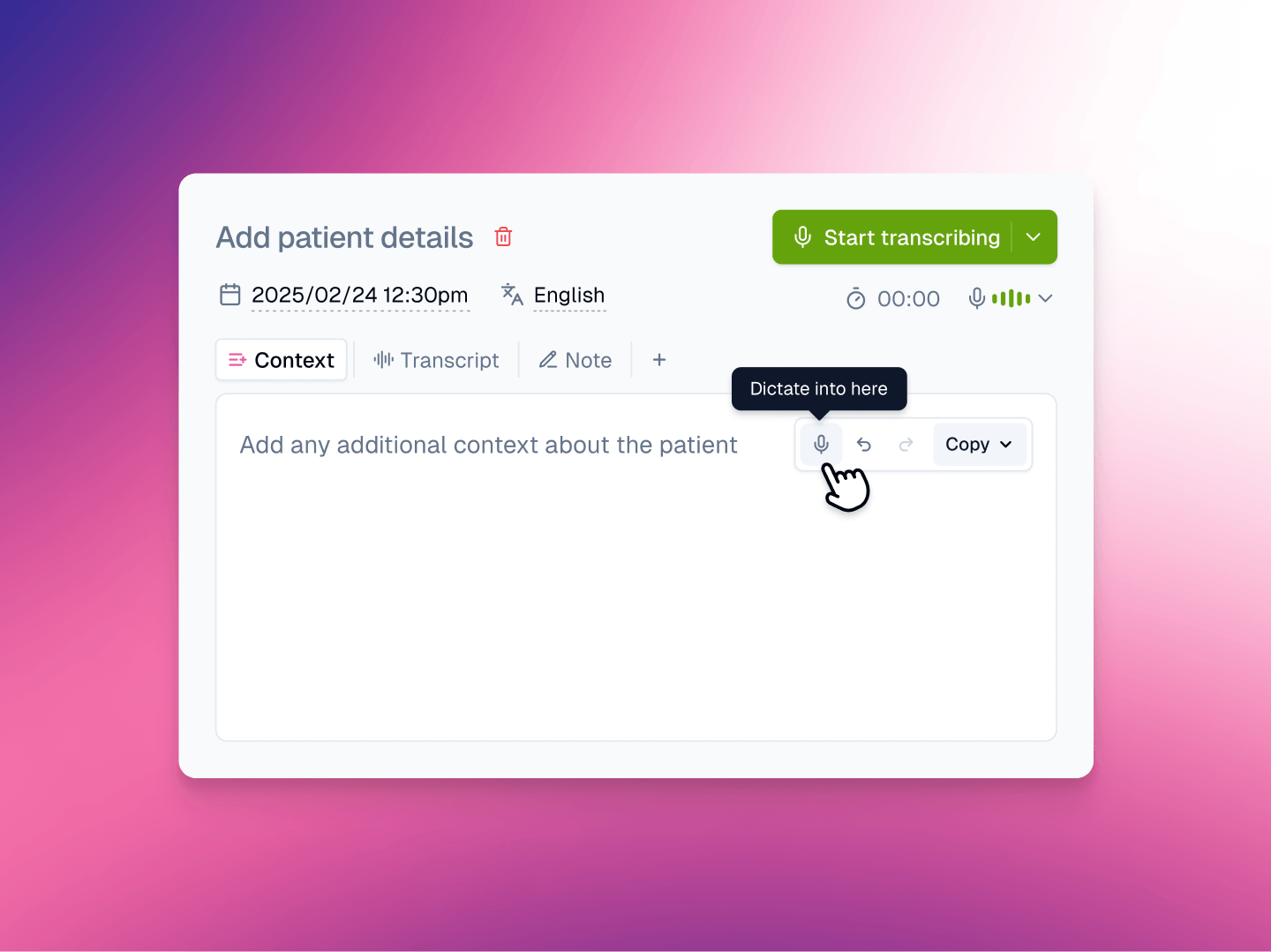
Dictated text appears as it’s spoken. Voice commands can be used for formatting and punctuation (new line, comma, new paragraph, etc).
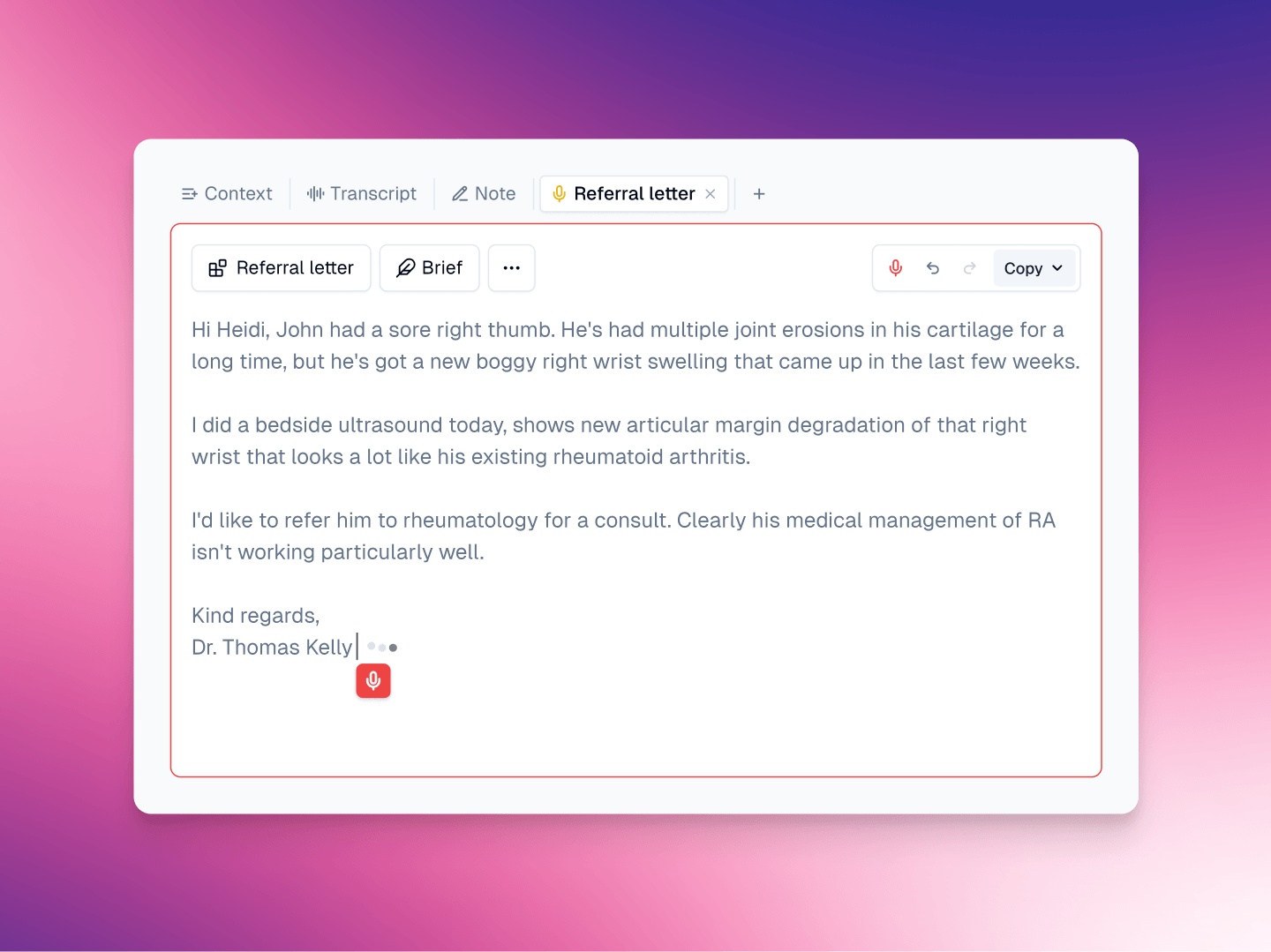
By toggling the dictation button, you can flip between manual typing and cursor-guided dictation, until your text is precisely to your preference.
Users can still choose between dictation or transcription upon beginning a new session. However, these functions will be merged in the near future, providing a more cohesive user experience (and a definitive end to the need for separate scribing and dictation products).
More granular voice control
Making Heidi sound exactly like you just got easier, with more granular control over Voice in the new Customise style menu.
To access the menu, click on the voice icon during a session.
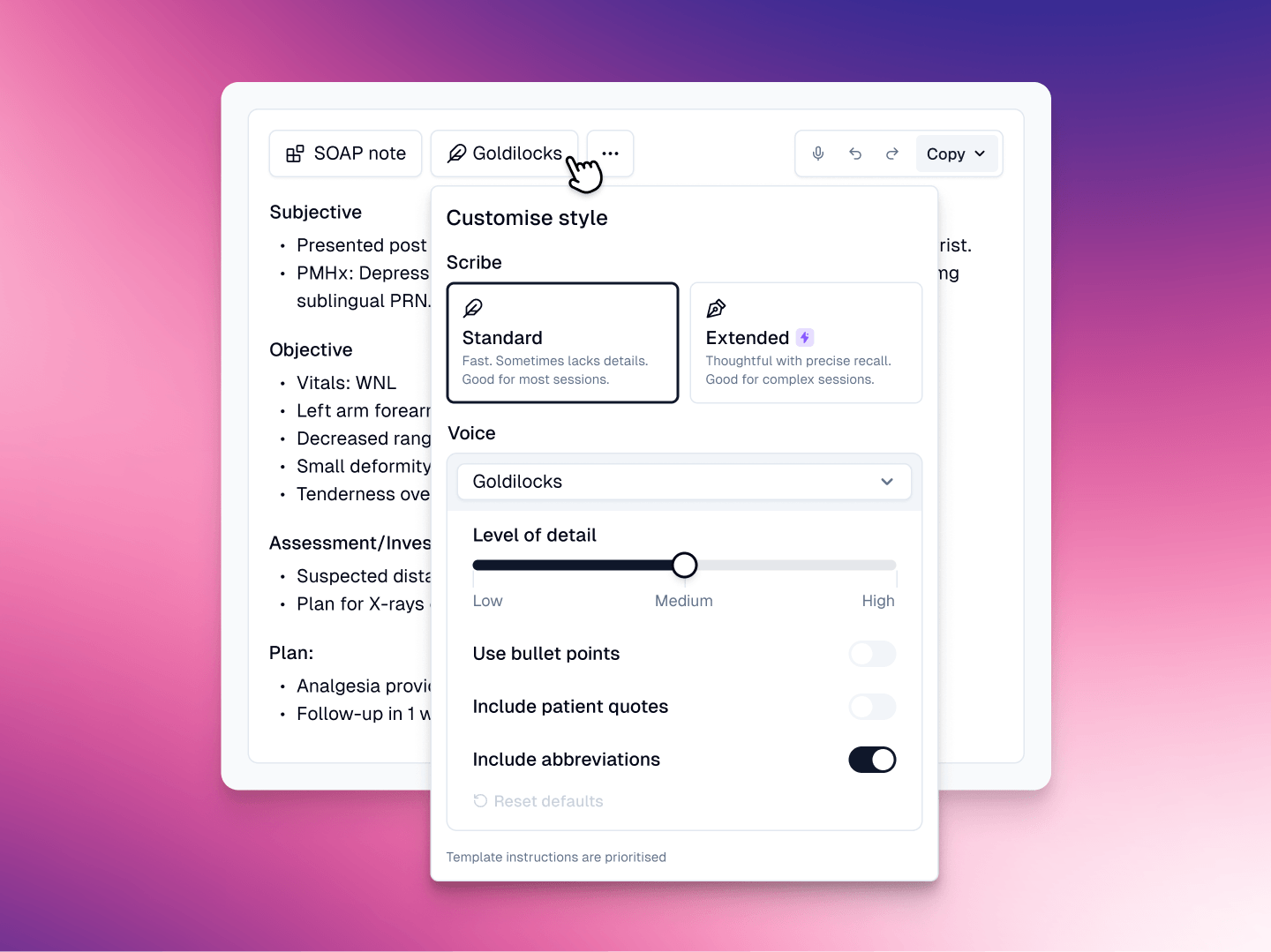
Here’s what’s changed:
- Brain is now Scribe - Standard scribe (previously Left Brain) produces optimum results for the vast majority of sessions. Some clinicians who conduct longer, more complex sessions may prefer Extended scribe (previously Right Brain).
- Custom Level of detail - Standard Voice styles can be further customized with the Level of detail slider.
- Additional stylistic preferences - Toggle the use of bullet points, patient quotes, and abbreviations on and off.
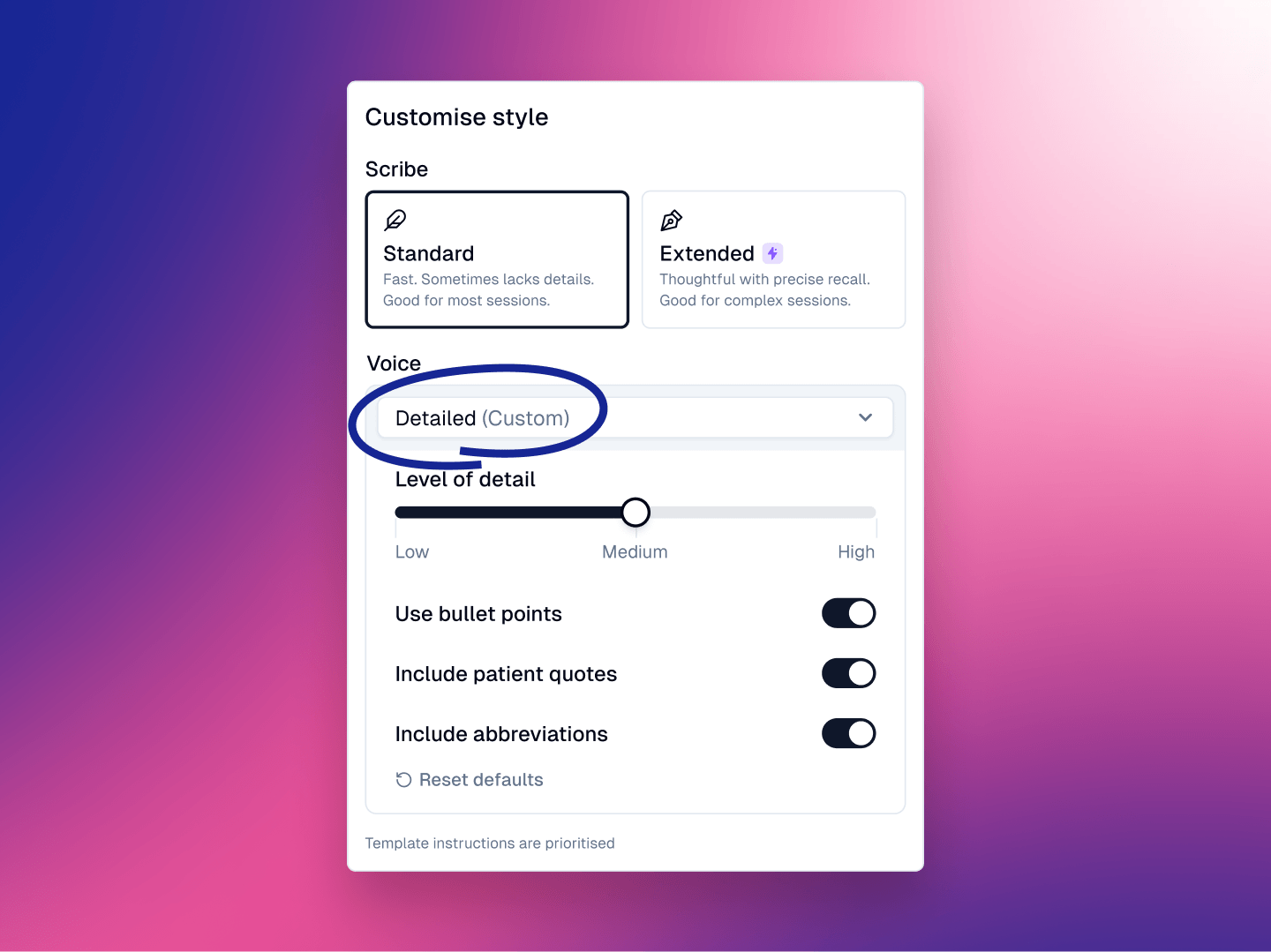
Please note: Template instructions are always prioritized over Voice settings. For example, if your template instructs Heidi to never use abbreviations, toggling on ‘Include abbreviations’ will not result in abbreviations being used in the output.
You can set default choices for all of the above in the Preferences menu via the sidebar.
Session summary in the header
A short summary with details from the session now auto-populates in the header.
Clicking on the session summary opens an editing window where details can be changed.
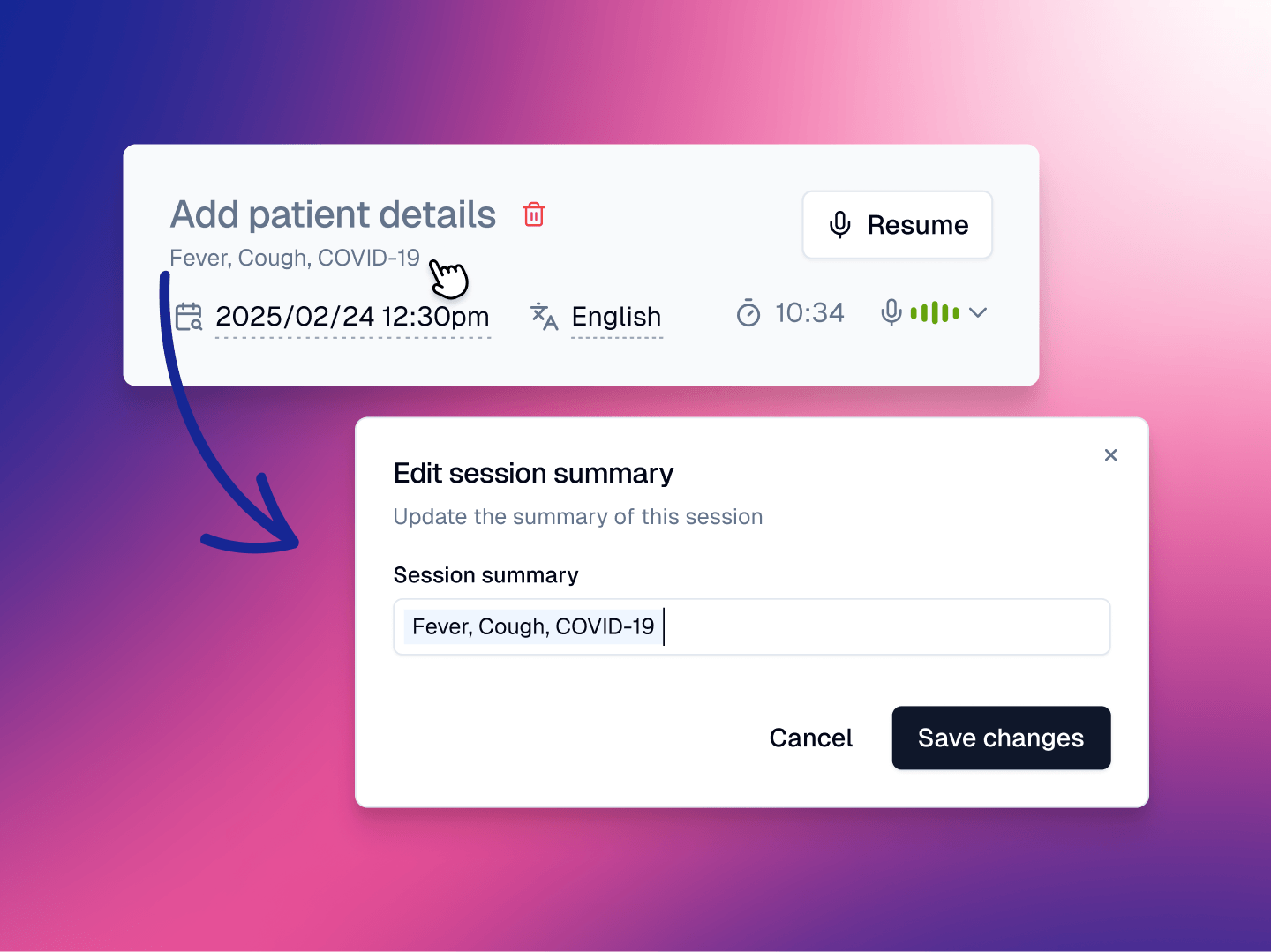
The summary is the title displayed in the Sessions list until patient details are added (or the session is linked with a patient profile).
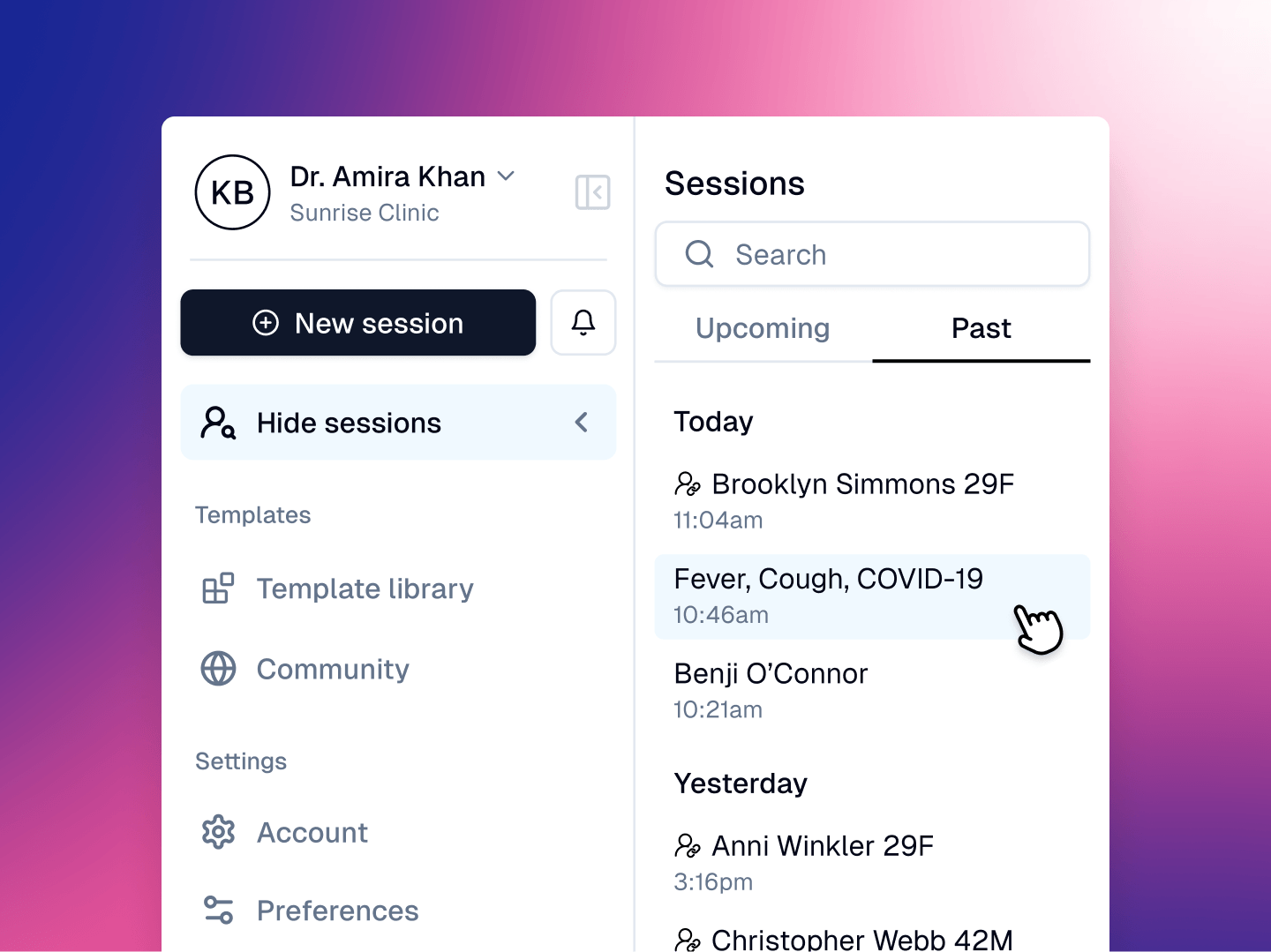
Benefits of the new session summary include:
- Easier scanning of linked sessions that sit within a patient’s profile
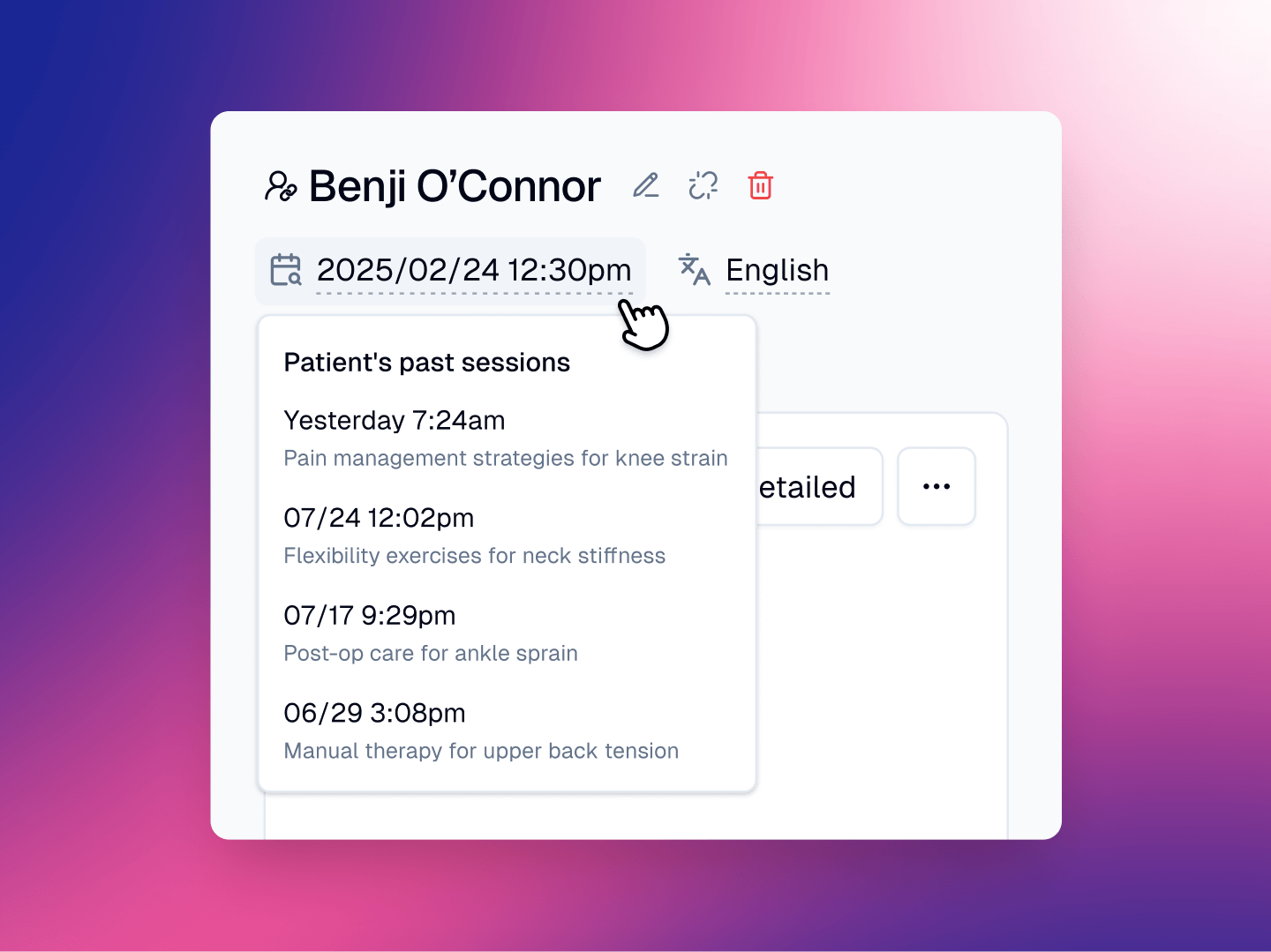
- Patient details and session summary can be separated, supporting a wider range of naming conventions
- All encounters in the Sessions list have a title, making it easier to identify individual sessions
- The risk of inadvertently opening and working on the wrong encounter is minimized
Papercuts
Improvements
- Desktop app now remembers the last microphone input and uses this as default
- Added a Sync changes button and Disable magic paste option to the Chrome extension
Fixes
- Fixed an issue with the Chrome extension not properly adjusting when a user’s browser window is zoomed in
- Resolved a problem copying notes with special characters (eg. < > & “) into an EMR (limited compatibility issue with one EMR)
- Fixed a bug causing the Magic paste button to show after closing the Chrome extension
Keep Reading

Features
Create Documents from Tasks, 100’s of New Templates and New Billing Codes
Heidi Team
Nov 19, 2025
Changelog
September 2025 updates
Editorial Team
Sep 15, 2025

Changelog
August 2025 updates
Heidi Team
Aug 27, 2025

Changelog
July 2025 updates
Heidi Team
Jul 23, 2025

Changelog
Tasks and past sessions as Context
Editorial Team
Jun 5, 2025

Changelog
ICD-10 coding and more intelligent Context
Heidi Team
Apr 21, 2025